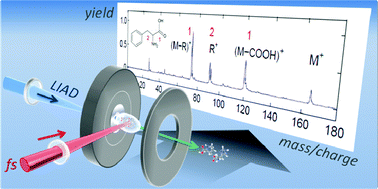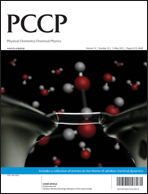LIAD-fs scheme for studies of ultrafast laser interactions with gas phase biomolecules
Abstract
Laser induced acoustic desorption (LIAD) has been used for the first time to study the parent ion production and fragmentation mechanisms of a biological molecule in an intense femtosecond (fs) laser field. The photoacoustic shock wave generated in the analyte substrate (thin Ta foil) has been simulated using the hydrodynamic HYADES code, and the full LIAD process has been experimentally characterised as a function of the desorption UV-laser pulse parameters. Observed neutral plumes of densities >109 cm−3 which are free from

- This article is part of the themed collection: Ultrafast chemical dynamics

 Please wait while we load your content...
Please wait while we load your content...